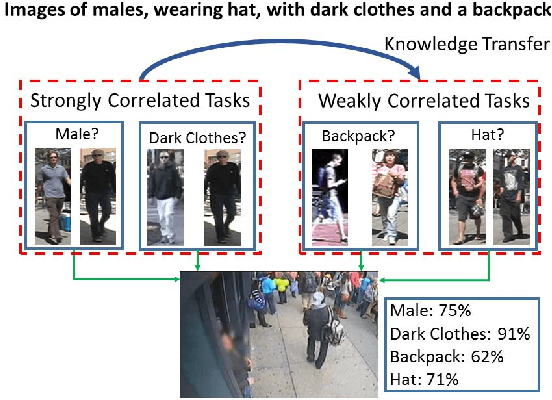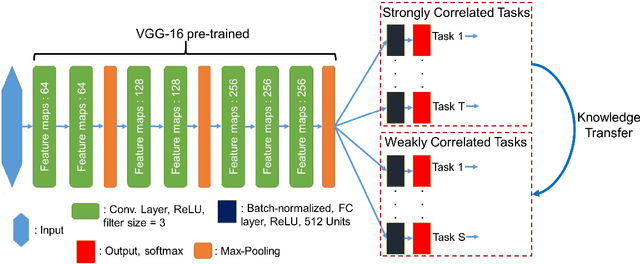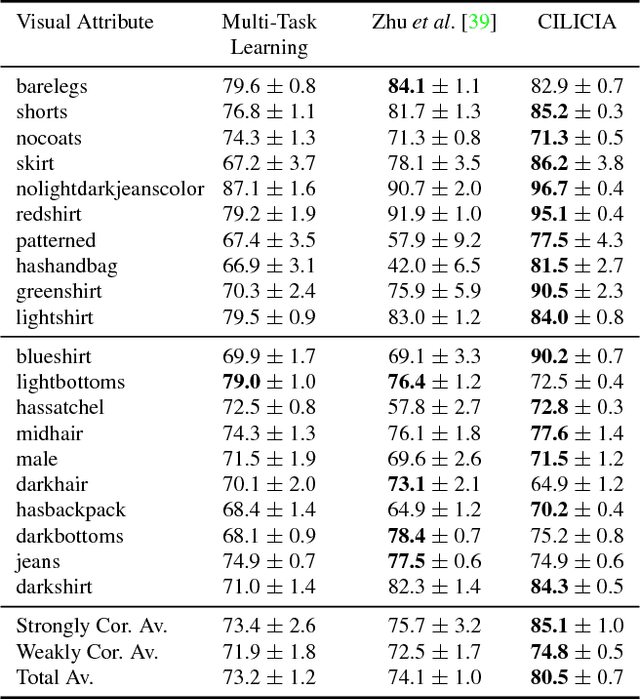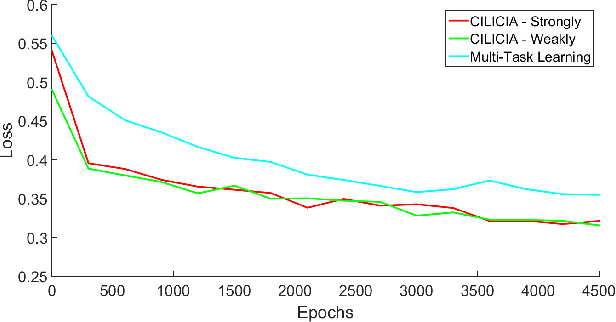Curriculum Learning for Multi-Task Classification of Visual Attributes
Paper and Code
Aug 29, 2017



Visual attributes, from simple objects (e.g., backpacks, hats) to soft-biometrics (e.g., gender, height, clothing) have proven to be a powerful representational approach for many applications such as image description and human identification. In this paper, we introduce a novel method to combine the advantages of both multi-task and curriculum learning in a visual attribute classification framework. Individual tasks are grouped based on their correlation so that two groups of strongly and weakly correlated tasks are formed. The two groups of tasks are learned in a curriculum learning setup by transferring the acquired knowledge from the strongly to the weakly correlated. The learning process within each group though, is performed in a multi-task classification setup. The proposed method learns better and converges faster than learning all the tasks in a typical multi-task learning paradigm. We demonstrate the effectiveness of our approach on the publicly available, SoBiR, VIPeR and PETA datasets and report state-of-the-art results across the board.
 Add to Chrome
Add to Chrome Add to Firefox
Add to Firefox Add to Edge
Add to Edge